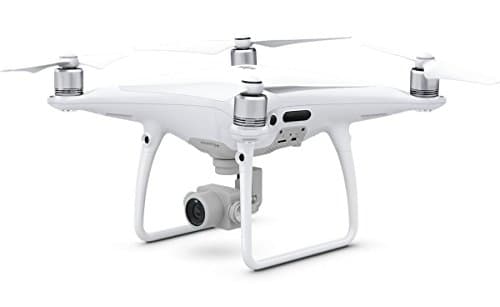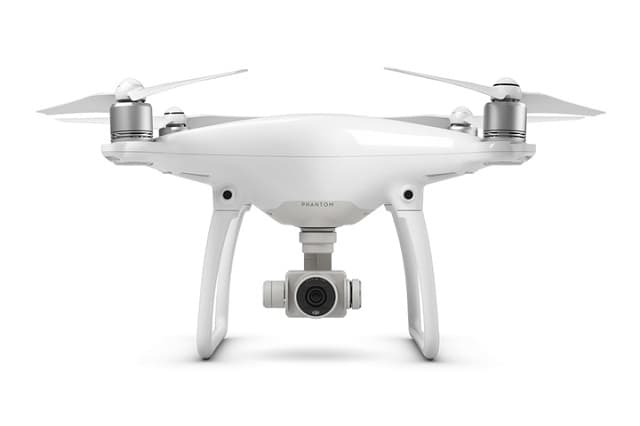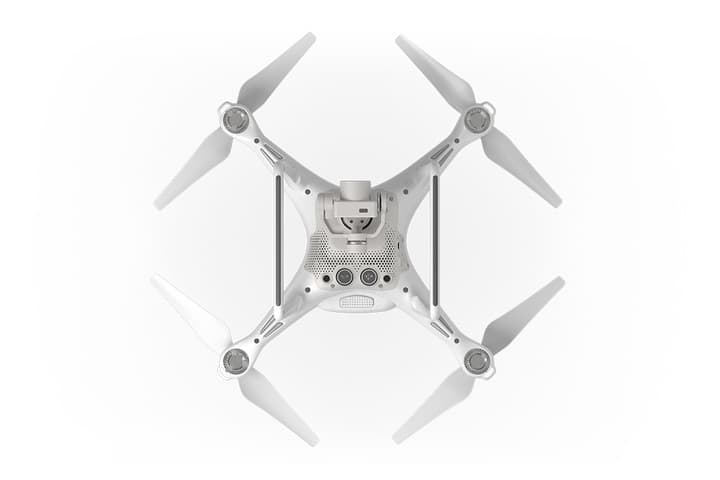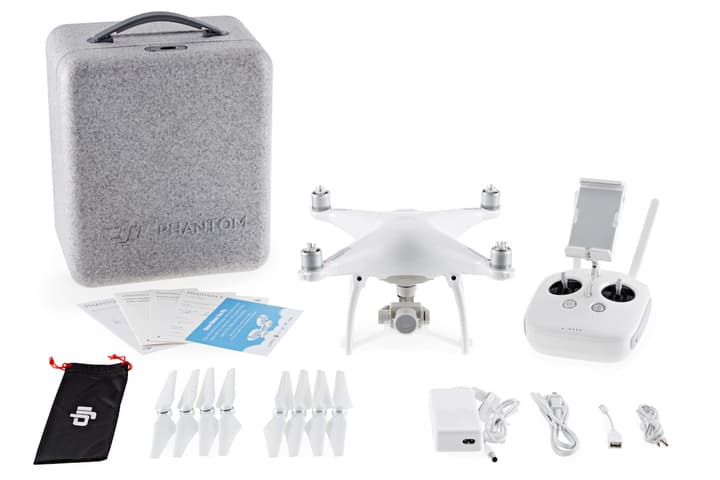The continuation of the success story
The new quadcopter from DJI Innovations was eagerly awaited. The question is whether the Chinese company promised too much in advance when it promised numerous exciting innovations for the DJI Phantom 4 (many of which are now also in the new DJI Mavic Pro). In fact, however, the DJI Phantom 4 brings a lot with it, which will literally raise the DJI Phantom series to a new level.
++ Now new: DJI Phantom 4 Pro ++
The drone itself has become a bit more elegant overall. The feel and build quality are as good as usual. The DJI Phantom 4 comes with a 3D camera and sophisticated anti-collision protection. The question remains whether this new quadcopter from the DJI Phantom series is worth putting the old Phantom 3 in the closet. One thing is certain, however: a closer look at the new quadcopter from DJI Innovations is absolutely worthwhile.
Extensive accessories – a quality of DJI Innovations
That DJI Innovations comes up with extensive accessories is not news. It is almost standard for products of the DJI Phantom series that, in addition to the battery and the charger, the remote control and several replacement propellers are also included. The power adapter is available in the country-specific version required for your own country. The user manual, gimbal clamp and USB OTG cable are also included, as well as a microUSB cable and a 16 GB microSD card. If you want to purchase additional replacement propellers, they cost $10 to $15. The replacement battery is more expensive at about $190.

But the accessories of the DJI Phantom 4 only get that certain something through a completely new idea of the manufacturer. The DJI Phantom 4 is delivered in a white cardboard box. That’s nothing new; the predecessor was packaged the same way. At least at first glance. At second glance, however, you can see a new feature inside the cardboard box: The DJI Phantom 4 is once again packed in a robust case, which can also be used as a transport case. In addition to the quadcopter, the spare propellers and the remote control, even two spare batteries fit in here.
In addition, you can store an Apple iPad Mini or another tablet of this size in the compartment for the user manual. The case is sturdy and looks elegant in terms of workmanship. Of course, if you want to spend the money, you can still order a separate carrying case from the manufacturer’s accessories store. However, unlike its predecessors, this is simply not necessary with the DJI Phantom 4.
The DJI Phantom 4 – a feast for the eyes

Those who already found the DJI Phantom 3 visually appealing will be simply thrilled by the DJI Phantom 4. Not only has the look become a bit sportier and slightly more elegant, for example with a high-gloss housing, slimmer booms and slightly higher motors. The overall impression is simply better, more refined and of higher quality.
The redesigned LED lights on the quadcopter also play their part. The camera stabilization has also undergone a revision compared to its predecessor. For example, the damper unit has disappeared into the interior of the quadcopter. The gimbal, which was previously responsible for holding the camera, has been replaced by a unibody unit. Visually and in terms of transport feel, this is another clear improvement over the previous model. New high-quality materials in the camera processing, which are usually more familiar from high-class cameras, perfectly round off the image of a drone with a camera, whose manufacturer increasingly emphasizes high-quality.
The remote control of the DJI Phantom 4
The remote control of the DJI Phantom 4 comes with a high-quality and elegant finish, similar to the remote control of its predecessor. However, more emphasis has been placed on the choice of materials, which can be seen, for example, in the integrated tablet and smartphone holder, which is no longer made of plastic, but of high-quality aluminum. A clear improvement, both in terms of looks as well as stability and manageability.
DJI Lightbridge is still the imaging system, which is firmly integrated into the remote control. The on/off switch, a Return-to-Home button, and switches for the camera’s video functions, various dials, and a C1 and C2 button can be found on the remote. Two antennas on the remote control ensure the best possible connection to the DJI Phantom 4. A USB port for connecting to a smartphone or tablet is also included, as is the microUSB port, for installing firmware updates.
Particularly interesting is the option to choose an advanced module with HDMI connection instead of the conventional remote control module. This allows you to transfer the camera’s images directly to FPV video goggles or an FPV monitor, for example. Especially the transfer to FPV goggles brings an unimagined feeling of freedom.
The DJI Go app – control of a special kind
However, like its predecessor, the DJI Phantom 4 can also be controlled via smartphone or tablet if the necessary free app is installed. However, you still need the normal remote control for the actual control via joysticks, etc., since there are no virtual joysticks in the app.
Once the DJI Phantom 4 has been initialized via the app, the camera image and telemetry data can be conveniently viewed on the smartphone. Calibrating the compass is also easily possible via the app. By the way, the flight altitude is limited to about 395 feet (120 meters), at least in the default setting. You can easily change this setting in the app and adjust the maximum flight altitude down or up if necessary. (Please comply with the applicable regulations and laws).
Follow-Me and Point of Interest were just two interesting features that the DJI Phantom 3 had to offer via the app. With the Follow-Me function, the quadcopter followed the person carrying a corresponding transmitter. The Point of Interest feature allowed the camera to lock onto a specific object of particular interest.

Both of these functions have been retained in the new app. However, a very interesting function has been added, which is something of a combination of the two previous options. The ActiveTrack function gives the command to follow an object that is determined with a selection on the remote control or tablet. It is no longer necessary for the person or object that the DJI Phantom 4 is to follow to be carrying a corresponding transmitter.
The 3D camera of the quadcopter records the object and virtually remembers it. In this way, the DJI Phantom follows the object and keeps it in the camera’s field of view the entire time. This way, wonderful film recordings can be created. For example, when the device follows a bird, a car, a snowboarder or a person on a bicycle. Depending on the environment, panorama and speed of the object being followed, a wide variety of shots can be created. A nice extension to the already multi-layered possibilities of the DJI Phantom series.
Another proven feature of the DJI Phantom is the Return to Home mode. Here, the quadcopter is commanded to make its way back with the push of a button. To do this, the flight altitude is entered and the device sets off on its way back to the starting point. However, at greater distances and especially with inexperienced pilots, the automatic return flight often offered a lot of accident potential. For example, if an obstacle on the return route was underestimated and the flight altitude was too low after all, this could quickly lead to a collision and thus to a costly accident.
This is now countered by a completely new feature: the DJI Phantom 4’s new anti-collision system, which continuously scans the entire environment and basically looks for obstacles. If such an obstacle is detected in the path, the quadcopter brakes and looks for a way around the obstacle. Especially when the DJI Phantom 4 is in automatic flight mode, this additional function is a real safety gain.
Not to be forgotten is also the newly added function of TapFly. Here, the pilot has the option of giving the command to fly to a location by simply tapping a position on the image projected by the quadcopter on the remote control. Although this does not replace the classic use of the remote control, it does allow the pilot to target individual points without having to explicitly steer the quadcopter there. And of course, the anti-collision system works here as well.
The propellers
The motors of the DJI Phantom 4 have been slightly changed compared to the previous models. The same applies to the propellers. Mounting the propellers is now even easier. You do not need a tool for mounting, with a few simple steps the propellers are positioned. As soon as the motors are switched on, the propellers tighten independently, so that no re-screwing or similar is necessary. This makes assembly very easy, even for non-professionals. Which propellers belong on which motors is made clear by colored accents on the propellers and motors.
The battery
An absolute novelty is the battery of the DJI Phantom 4. In its construction alone, it differs greatly from that of its predecessor, which is why batteries from the DJI Phantom 3 are also not compatible for the DJI Phantom 4. Old batteries can therefore unfortunately not be used as replacement batteries. However, this is by no means only for optical reasons. The new battery is more powerful. Thus, the flight time is increased from about 25 minutes to 28 – 30 minutes. At first glance, that doesn’t sound like much. But the bottom line is an increase in possible flight time of 10-20%. Definitely an improvement compared to the previous model.
Since the charger also has a new connector, the old charger from the DJI Phantom 3 is also not compatible with that of the current model. Four LED lights indicate the battery status. Also new is the better ventilation system, which ensures that all four battery cells are ventilated evenly. This ensures that the DJI Phantom 4 does not run hot even under exceptional conditions. Incidentally, once a pre-defined point in battery consumption is reached, the quadcopter automatically starts its journey home. Of course, protected by the anti-collision system here as well.
The sport mode – speed is the trump card
A special extra is the new Sport mode. Up to 45 mph (72 km/h) can be delivered by the DJI Phantom 4 in Sport mode. Extraordinary aerial shots, the feeling of real chases when you let the quadcopter follow a faster object, and a slight speed rush when you follow the high-speed flight on FPV goggles are the consequences.
Features
- 4K camera with 30 FPS (1080p)
- 3-axis gimbal
- Battery: 5350 mAh
- Flight time: approx. 28 minutes
- Range: approx. 5000 m
- Weight: 1380 g

Conclusion
If you are looking for a new drone anyway, you should take a closer look at the DJI Phantom 4, as long as it fits into your budget. Various additional functions make the copter a real experience for beginners as well as experienced pilots. Those who already own the DJI Phantom 3 and are completely satisfied with the model should take a closer look at the new additional features in one of the numerous videos from the manufacturer to decide for themselves whether the new possibilities justify the purchase of the successor. The bottom line is that the DJI Phantom 4 is a quadcopter with excellent features and flight characteristics, but it comes at a price.



